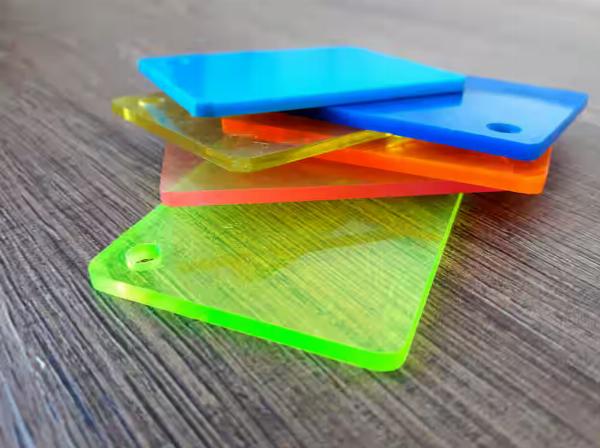The Role of Acrylic Glass Suppliers in Custom Architectural Designs

Strong 8k brings an ultra-HD IPTV experience to your living room and your pocket.
In modern architecture, the demand for sleek, functional, and innovative materials is growing rapidly. Acrylic glass, with its versatility, strength, and clarity, is becoming a popular choice for architects and designers looking to push the boundaries of contemporary design. Whether it's for windows, skylights, facades, or interior design elements, acrylic glass offers a lightweight yet durable alternative to traditional glass. We will explore how acrylic glass suppliers play a critical role in turning architectural visions into reality by providing customised acrylic solutions tailored to meet the unique demands of modern projects.
Why Acrylic Glass for Architectural Design?
Before diving into the role of suppliers, it’s important to understand why acrylic glass is increasingly favoured in architecture. Compared to traditional glass, acrylic glass offers several advantages that make it ideal for architectural applications:
Lightweight Durability: Acrylic glass is significantly lighter than conventional glass, making it easier to transport, handle, and install. This property is especially beneficial for large-scale projects where the weight of materials can significantly impact structural design.
Clarity and Transparency: Acrylic glass offers exceptional clarity, often surpassing that of standard glass. It allows for greater light transmission and is less prone to yellowing over time, which ensures that spaces remain bright and open for years to come.
Impact Resistance: Acrylic glass is far more impact-resistant than regular glass, making it a safer choice for applications where safety is a concern, such as in public spaces or high-traffic areas. In case of breakage, acrylic doesn’t shatter into dangerous shards, reducing the risk of injury.
Design Flexibility: Acrylic glass is highly customizable. It can be moulded, cut, bent, and shaped into virtually any form, offering endless design possibilities. It can also be tinted, frosted, or given unique finishes to match the aesthetic vision of the project.
UV Resistance: Modern acrylic glass is designed to be resistant to UV rays, preventing discoloration or degradation when used in outdoor applications, such as skylights or facades.
How Acrylic Glass Suppliers Collaborate with Architects
Acrylic glass suppliers are more than just material providers; they are integral partners in the design and execution of architectural projects. They work closely with architects and designers from the conceptual stage to installation, offering expertise, and customization options to ensure that each project meets its specific aesthetic, functional, and technical requirements. Here’s how this collaboration works:
1. Consultation and Design Support
The first step in any architectural project involving acrylic glass is the consultation phase. During this stage, Acrylic Suppliers UK works with architects to understand the project's vision and technical requirements. Whether the architect is designing a modern building facade or a minimalist interior space, the supplier provides insights on how acrylic glass can be used to bring the concept to life.
Suppliers offer advice on factors such as material thickness, color options, and surface finishes. For example, they might recommend thicker acrylic for areas that require greater impact resistance or suggest tinted acrylic for creating privacy in certain parts of a building. By collaborating early on, suppliers ensure that architects can make informed decisions about the type of acrylic glass that will best suit their needs.
2. Customization and Fabrication
One of the most significant advantages of working with acrylic glass is its high level of customizability. Unlike traditional glass, acrylic can be easily molded into various shapes, sizes, and forms. Acrylic glass suppliers provide architects with the ability to fully customize the material to match the specific requirements of their projects.
3. Technical Expertise and Problem-Solving
Acrylic Glass Suppliers bring valuable technical expertise to the table. They understand the physical properties of the material and can provide solutions to complex design challenges that architects may face. For example, if an architect is designing a large area with expansive skylights, the supplier can recommend the appropriate thickness and structural support needed to ensure both safety and performance.
4. Sustainability and Environmental Considerations
As sustainability becomes an increasingly important factor in modern architecture, acrylic glass suppliers are innovating to offer eco-friendly solutions. Acrylic glass is 100% recyclable, making it an attractive choice for green building projects.
By offering sustainable acrylic options, suppliers help architects achieve their sustainability goals without sacrificing design flexibility or material performance. This collaboration is crucial in creating eco-friendly buildings that not only look stunning but also minimise their environmental impact.
Examples of Acrylic Glass in Architectural Projects
Acrylic glass has been used in numerous iconic architectural projects, demonstrating its versatility and aesthetic appeal. Here are a few examples:
Building Facades: Acrylic glass panels are used in modern building facades to create a sleek, transparent look that allows natural light to flood interior spaces while providing thermal insulation and UV protection.
Skylights and Roof Domes: Custom acrylic skylights provide stunning views and natural light in residential and commercial buildings. Their lightweight nature makes them easy to install, even in large spans.
Interior Partitions: In open-plan offices or residential spaces, acrylic glass partitions offer a modern and minimalist way to divide spaces while maintaining an open feel.
Art Installations: Many museums and public spaces use acrylic glass to create stunning, transparent art installations that play with light and reflection.
As architectural trends continue to evolve, acrylic glass will remain a key material for achieving bold, forward-thinking designs that prioritise both form and function.
Note: IndiBlogHub features both user-submitted and editorial content. We do not verify third-party contributions. Read our Disclaimer and Privacy Policyfor details.



